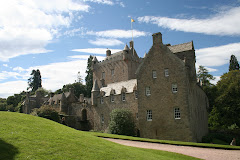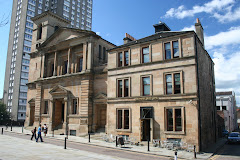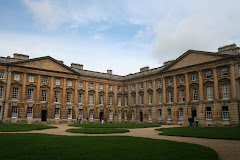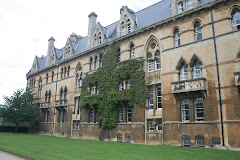In the late spring of 1815, three brothers, all McCoigs, although they spelled their name MacCuaig -- upon arrival it was respelled phonetically, the Mac became Mc and the Gaelic dipthong uai became oi, for reasons God alone knows the g was retained -- all young men in their twenties, John, Malcolm, and Neal emigrated from Inverness. They boarded a ship docked in the Moray Firth and sailed east into the North Sea, then north around northern Scotland's Cape Wrath, and then south with the Outer Hebrides on their starboard side and the Inner Hebrides on their port side. At Barra, they would set a course west for North America. In several weeks, they would land in the port of Charleston, South Carolina. From there they made their way west to the Carolina highlands where they found a people and a place that looked and sounded like home, but warmer and sunnier. Compared to the Scottish Highlands, a lot of places are much warmer and much sunnier.
We stayed at Inverness' Royal Highland Hotel for two days. It was built when the rail line pushed its way north during the Victorian era. From Inverness, we visited Culloden Moor, whose April 16, 1746 battle bears its name. The Catholic Highland Jacobite rebels, led by Bonnie Prince Charlie aka Charles Edward Stuart who aspired to restore the Stuart monarchy with himself as king, were massacred by the Protestant British government forces of the Duke of Cumberland. The battle marked the beginning of the end of the clan system of the Highlands. It also resulted in the suppression of Highland culture for more than a century -- no tartans, no bagpipes, the heavy taxation of whisky. The moor was a desolate place in 1746 and remains so in 2007. In 1746, the MacCuaigs were en route to join the battle on the side of the Jacobites, not because they were Catholics, but because they were Scottish and the government forces were English. They never made it and lived to tell the tale. No prisoners were taken. The battlefield wounded were killed.
We made two additional side trips from Inverness as well. One to Cawdor Castle, the fictional home of Shakespeare's tragedy Macbeth and the other to the neolithic rock formations, the Clava Cairns. The Thanes of Cawdor have inhabited Cawdor Castle continuously since the fourteenth century.
That's it for the moment. Peace.
Tuesday, August 7, 2007
Subscribe to:
Post Comments (Atom)
Links worth visiting
- Dan Kimball's website -- Dan is author of The Emerging Church and pastor of Vintage Church, Santa Cruz, CA
- Calvin Church, Zelienople, PA
- Calvin Institue of Christian Worship
- William and Mary's DOG Street Journal
- Brian McLaren's hompage -- author, speaker, activist
- Isabella Stewart Gardner Museum, Boston, MA
- JFK Presidential Library and Museum, Boston, MA
- My writing instructor at Oxford's Summer School
- Homepage for Oxford University's Oxford Experience
- Simon Fraser University Pipe Band
- One of the guitarists with whom I studied in Maryville
- For the bluegrass music fan with details about the bluegrass guitar camp I will be attending
- Montreat: The starting point for hiking western NC's Blue Ridge wilderness
- For citizens of Red Sox Nation
- My home and place of study while in Glasgow, Scotland, UK
- Here's the site of the bluegrass guitar camp in the TN Smokies
- Take a virtual tour of Cooperstown's Baseball Hall of Fame
- Barnwell Inn: My B&B home away from home in Cooperstown, NY
- First Presbyterian Church, Winchester, VA, USA





















No comments:
Post a Comment